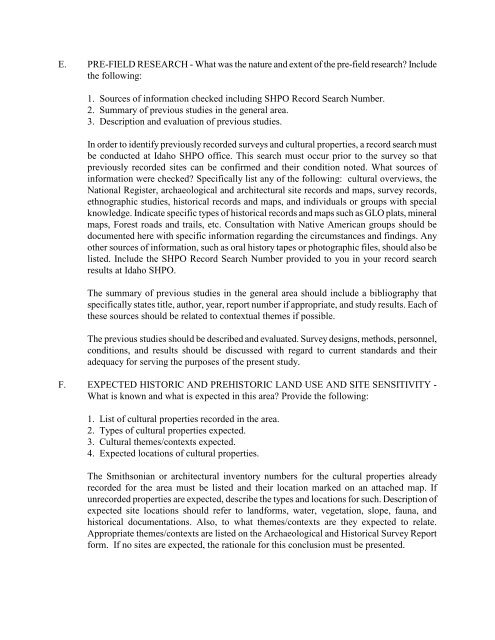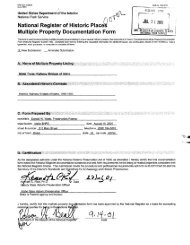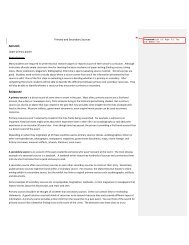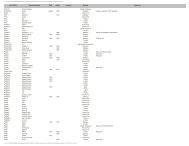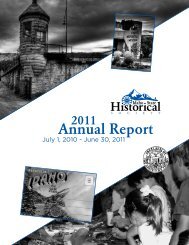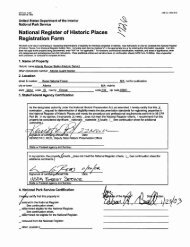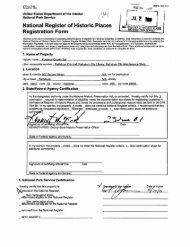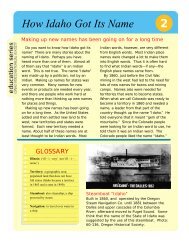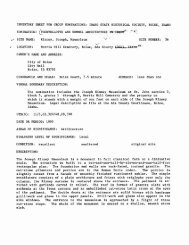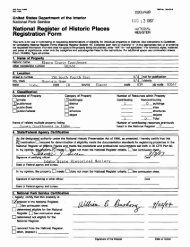guidelines for documenting archaeological and historical surveys
guidelines for documenting archaeological and historical surveys
guidelines for documenting archaeological and historical surveys
Create successful ePaper yourself
Turn your PDF publications into a flip-book with our unique Google optimized e-Paper software.
E. PRE-FIELD RESEARCH - What was the nature <strong>and</strong> extent of the pre-field research? Includethe following:1. Sources of in<strong>for</strong>mation checked including SHPO Record Search Number.2. Summary of previous studies in the general area.3. Description <strong>and</strong> evaluation of previous studies.In order to identify previously recorded <strong>surveys</strong> <strong>and</strong> cultural properties, a record search mustbe conducted at Idaho SHPO office. This search must occur prior to the survey so thatpreviously recorded sites can be confirmed <strong>and</strong> their condition noted. What sources ofin<strong>for</strong>mation were checked? Specifically list any of the following: cultural overviews, theNational Register, <strong>archaeological</strong> <strong>and</strong> architectural site records <strong>and</strong> maps, survey records,ethnographic studies, <strong>historical</strong> records <strong>and</strong> maps, <strong>and</strong> individuals or groups with specialknowledge. Indicate specific types of <strong>historical</strong> records <strong>and</strong> maps such as GLO plats, mineralmaps, Forest roads <strong>and</strong> trails, etc. Consultation with Native American groups should bedocumented here with specific in<strong>for</strong>mation regarding the circumstances <strong>and</strong> findings. Anyother sources of in<strong>for</strong>mation, such as oral history tapes or photographic files, should also belisted. Include the SHPO Record Search Number provided to you in your record searchresults at Idaho SHPO.The summary of previous studies in the general area should include a bibliography thatspecifically states title, author, year, report number if appropriate, <strong>and</strong> study results. Each ofthese sources should be related to contextual themes if possible.The previous studies should be described <strong>and</strong> evaluated. Survey designs, methods, personnel,conditions, <strong>and</strong> results should be discussed with regard to current st<strong>and</strong>ards <strong>and</strong> theiradequacy <strong>for</strong> serving the purposes of the present study.F. EXPECTED HISTORIC AND PREHISTORIC LAND USE AND SITE SENSITIVITY -What is known <strong>and</strong> what is expected in this area? Provide the following:1. List of cultural properties recorded in the area.2. Types of cultural properties expected.3. Cultural themes/contexts expected.4. Expected locations of cultural properties.The Smithsonian or architectural inventory numbers <strong>for</strong> the cultural properties alreadyrecorded <strong>for</strong> the area must be listed <strong>and</strong> their location marked on an attached map. Ifunrecorded properties are expected, describe the types <strong>and</strong> locations <strong>for</strong> such. Description ofexpected site locations should refer to l<strong>and</strong><strong>for</strong>ms, water, vegetation, slope, fauna, <strong>and</strong><strong>historical</strong> documentations. Also, to what themes/contexts are they expected to relate.Appropriate themes/contexts are listed on the Archaeological <strong>and</strong> Historical Survey Report<strong>for</strong>m. If no sites are expected, the rationale <strong>for</strong> this conclusion must be presented.


